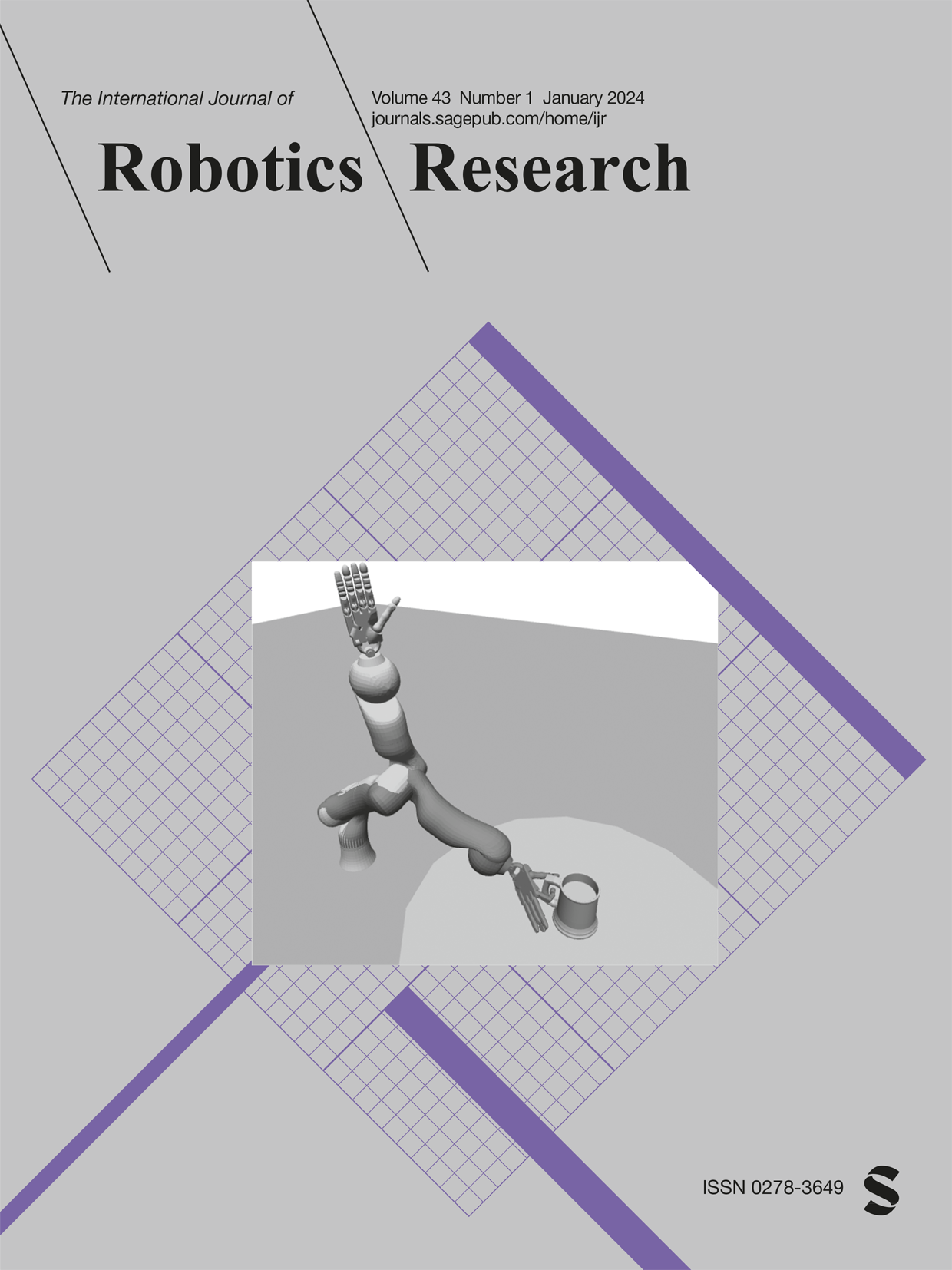The matroid team surviving orienteers problem and its variants: Constrained routing of heterogeneous teams with risky traversal
IF 5
1区 计算机科学
Q1 ROBOTICS
引用次数: 0
Abstract
Consider deploying a team of robots in order to visit sites in a risky environment (i.e., where a robot might be lost during a traversal), subject to team-based operational constraints such as limits on team composition, traffic throughputs, and launch constraints. We formalize this problem using a graph to represent the environment, enforcing probabilistic survival constraints for each robot, and using a matroid (which generalizes linear independence to sets) to capture the team-based operational constraints. The resulting “Matroid Team Surviving Orienteers” (MTSO) problem has broad applications for robotics such as informative path planning, resource delivery, and search and rescue. We demonstrate that the objective for the MTSO problem has submodular structure, which leads us to develop two polynomial time algorithms which are guaranteed to find a solution with value within a constant factor of the optimum. The second of our algorithms is an extension of the accelerated continuous greedy algorithm, and can be applied to much broader classes of constraints while maintaining bounds on suboptimality. In addition to in-depth analysis, we demonstrate the efficiency of our approaches by applying them to a scenario where a team of robots must gather information while avoiding dangers in the Coral Triangle and characterize scaling and parameter selection using a synthetic dataset.矩阵团队生存定向问题及其变体:具有风险穿越的异构团队的约束路由
考虑部署一个机器人团队,以便访问危险环境中的站点(例如,机器人可能在遍历过程中丢失),并受到基于团队的操作约束,例如团队组成、流量吞吐量和发射约束的限制。我们使用一个图来表示环境,对每个机器人实施概率生存约束,并使用一个矩阵(将线性独立性推广到集合)来捕获基于团队的操作约束,从而形式化了这个问题。由此产生的“Matroid Team survival Orienteers”(MTSO)问题在机器人领域有着广泛的应用,比如信息路径规划、资源传递、搜索和救援。我们证明了MTSO问题的目标具有子模结构,这使得我们开发了两种多项式时间算法,保证找到值在最优的常数因子内的解。我们的第二种算法是加速连续贪婪算法的扩展,可以应用于更广泛的约束类别,同时保持次优性的界限。除了深入分析之外,我们还通过将我们的方法应用于一个场景来证明我们的方法的效率,在这个场景中,一组机器人必须收集信息,同时避免珊瑚三角中的危险,并使用合成数据集描述缩放和参数选择。
本文章由计算机程序翻译,如有差异,请以英文原文为准。
求助全文
约1分钟内获得全文
求助全文
来源期刊
CiteScore
22.20
自引率
0.00%
发文量
34
审稿时长
6-12 weeks
期刊介绍:
The International Journal of Robotics Research (IJRR) has been a leading peer-reviewed publication in the field for over two decades. It holds the distinction of being the first scholarly journal dedicated to robotics research.
IJRR presents cutting-edge and thought-provoking original research papers, articles, and reviews that delve into groundbreaking trends, technical advancements, and theoretical developments in robotics. Renowned scholars and practitioners contribute to its content, offering their expertise and insights. This journal covers a wide range of topics, going beyond narrow technical advancements to encompass various aspects of robotics.
The primary aim of IJRR is to publish work that has lasting value for the scientific and technological advancement of the field. Only original, robust, and practical research that can serve as a foundation for further progress is considered for publication. The focus is on producing content that will remain valuable and relevant over time.
In summary, IJRR stands as a prestigious publication that drives innovation and knowledge in robotics research.

 求助内容:
求助内容: 应助结果提醒方式:
应助结果提醒方式:


